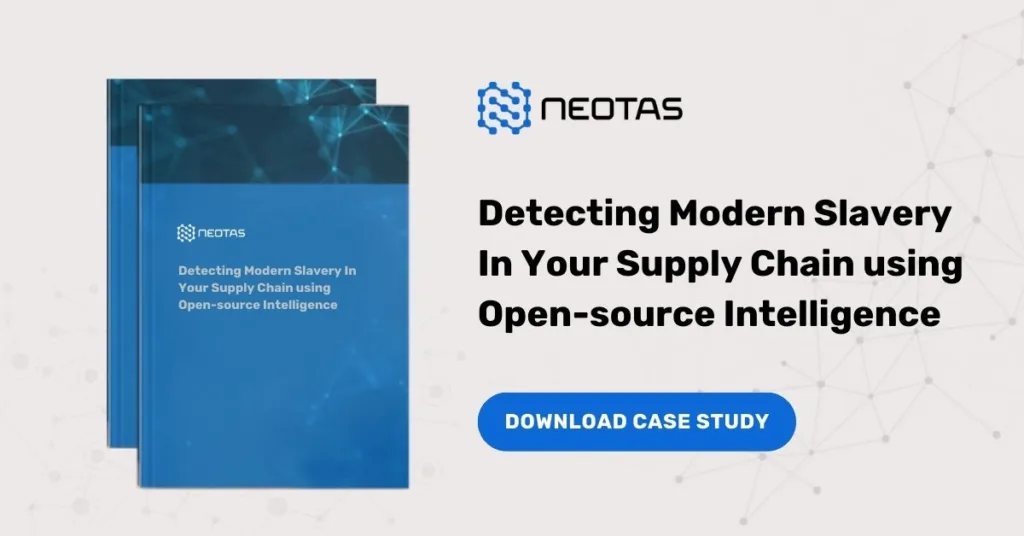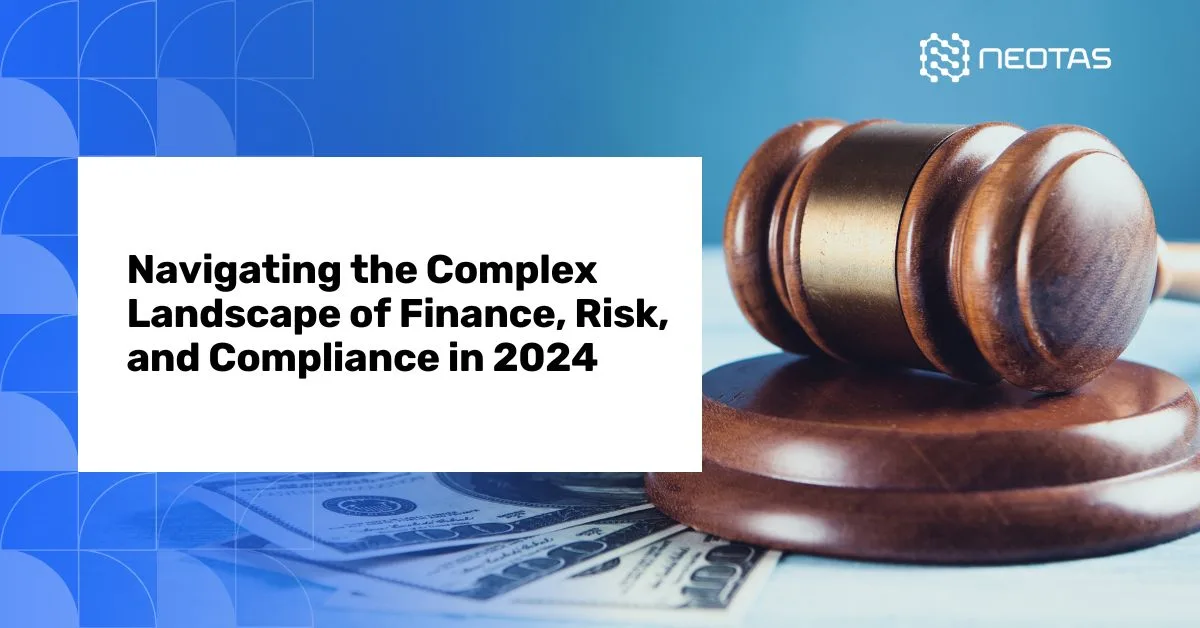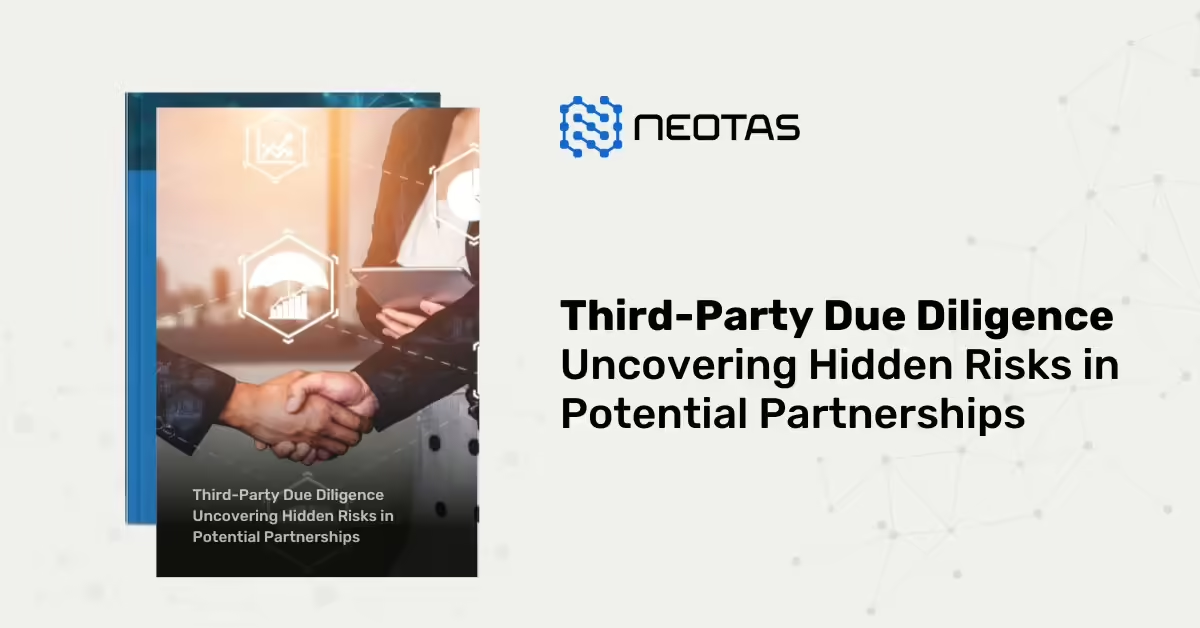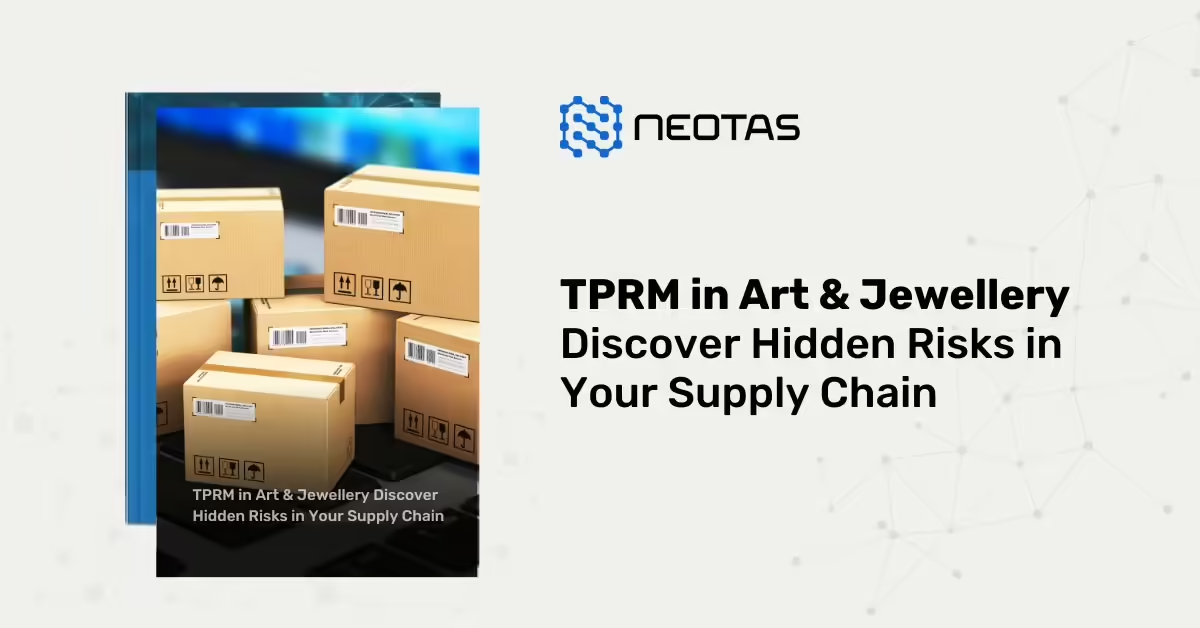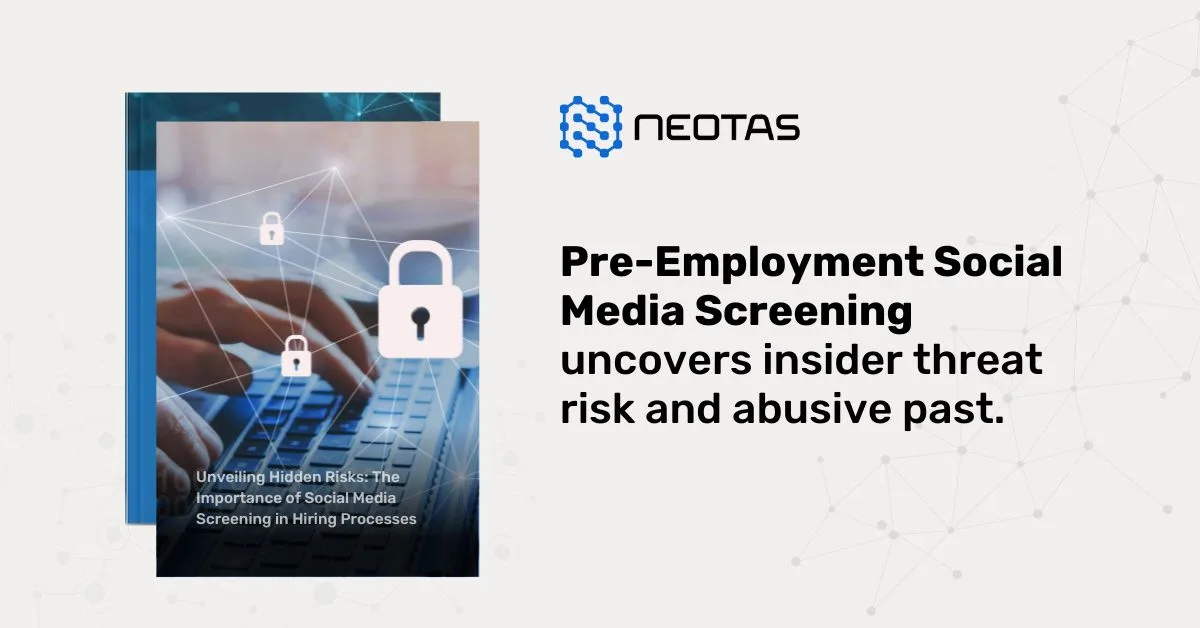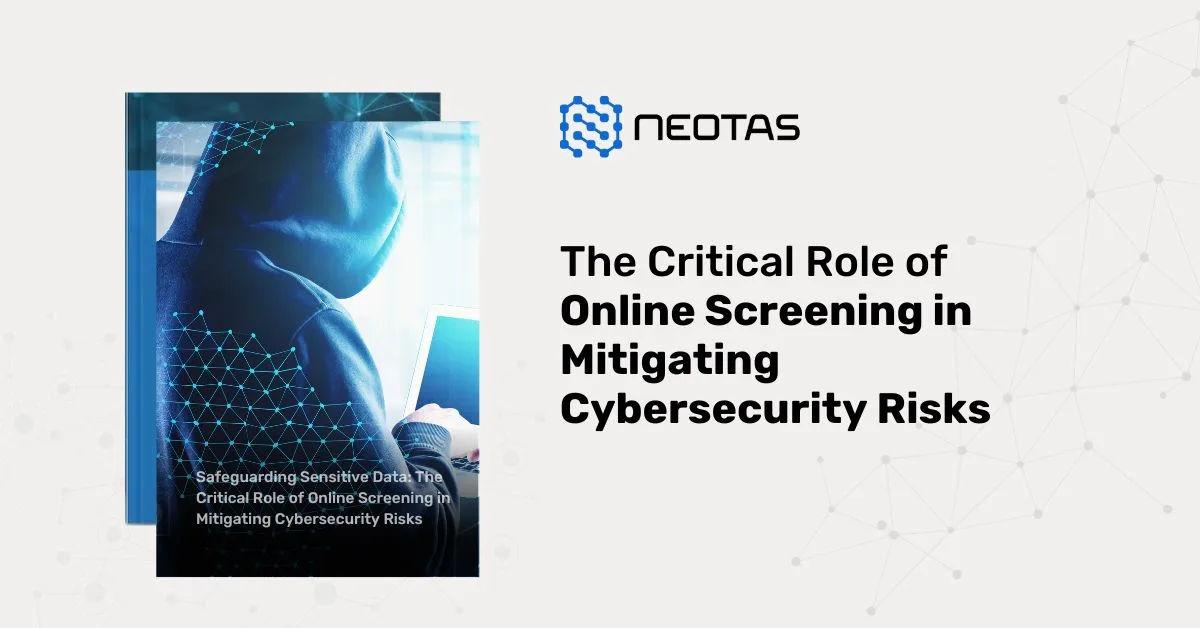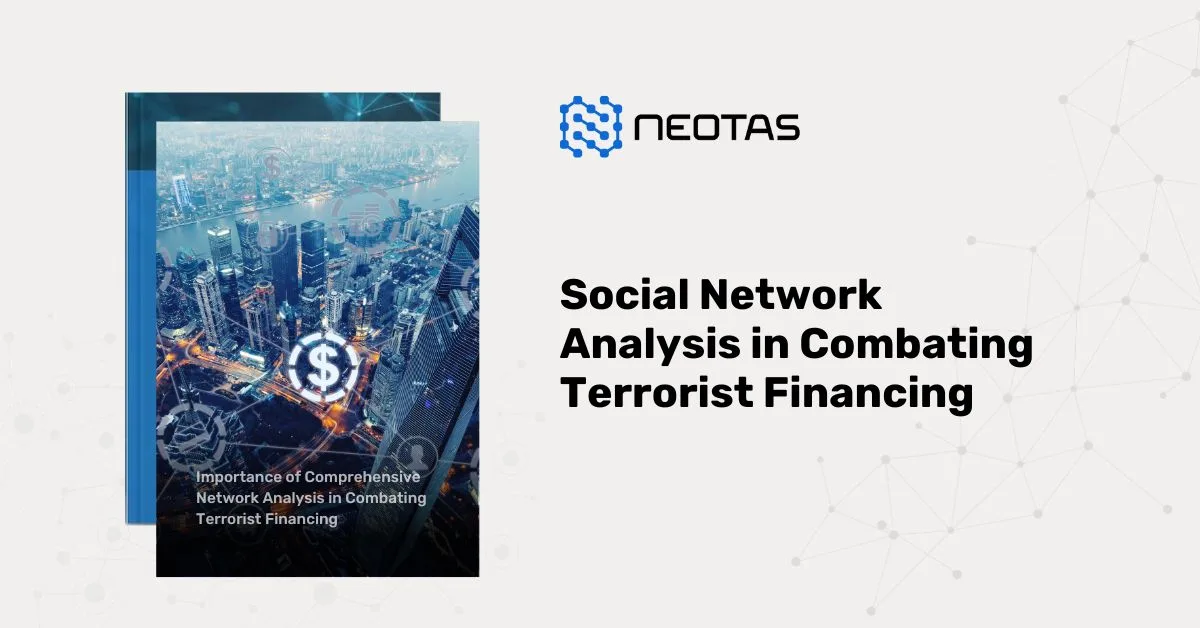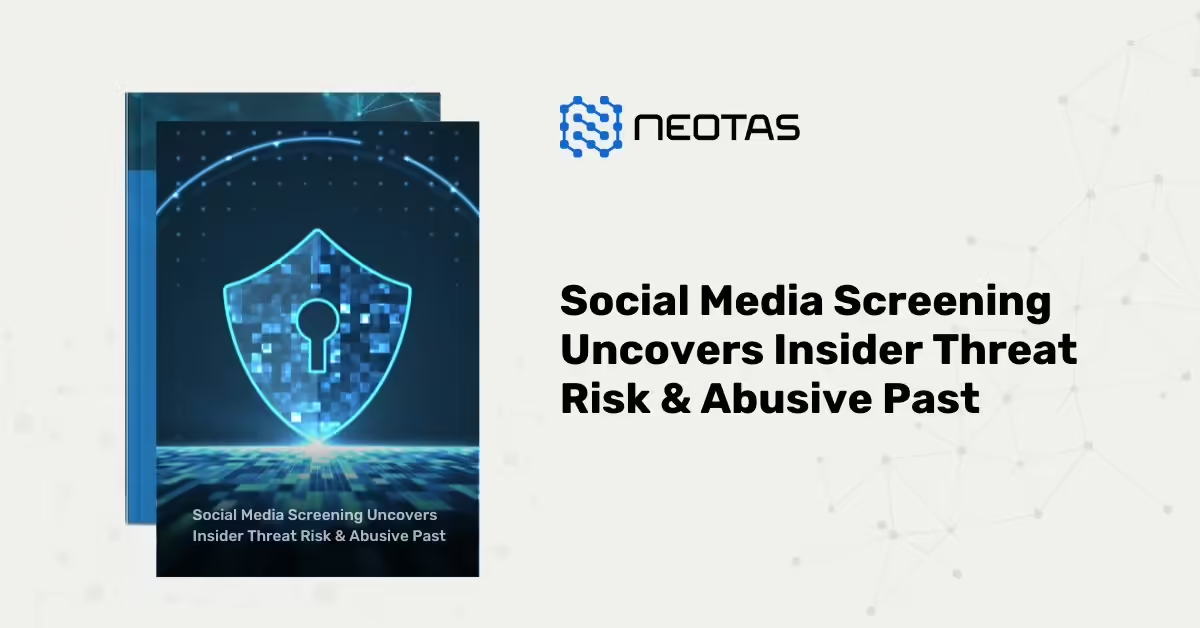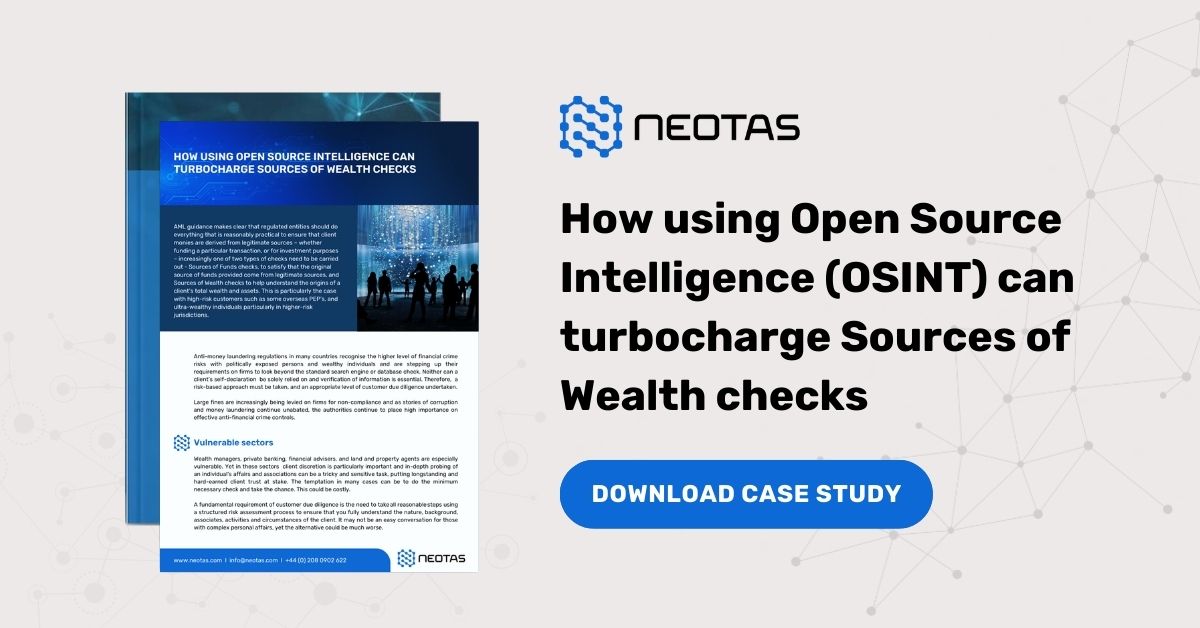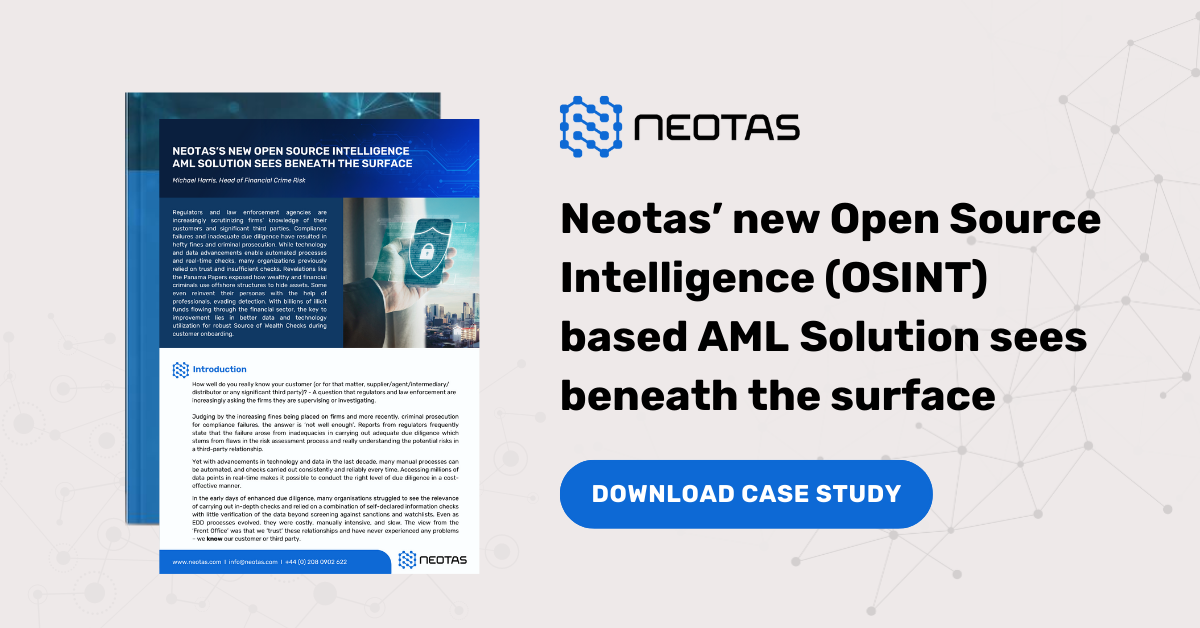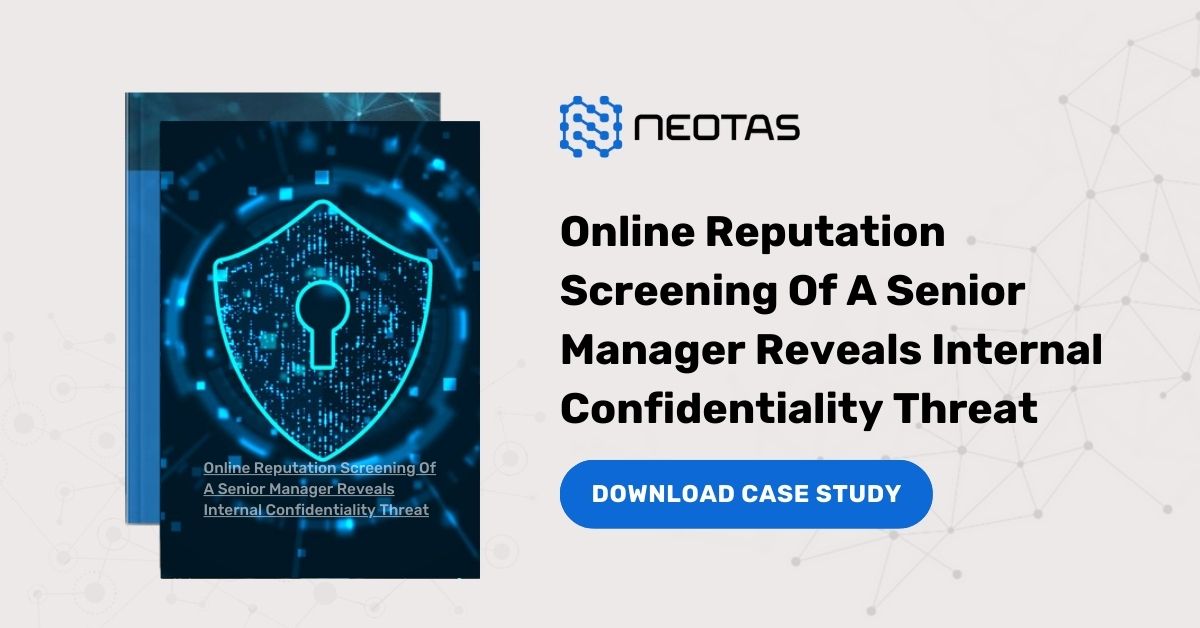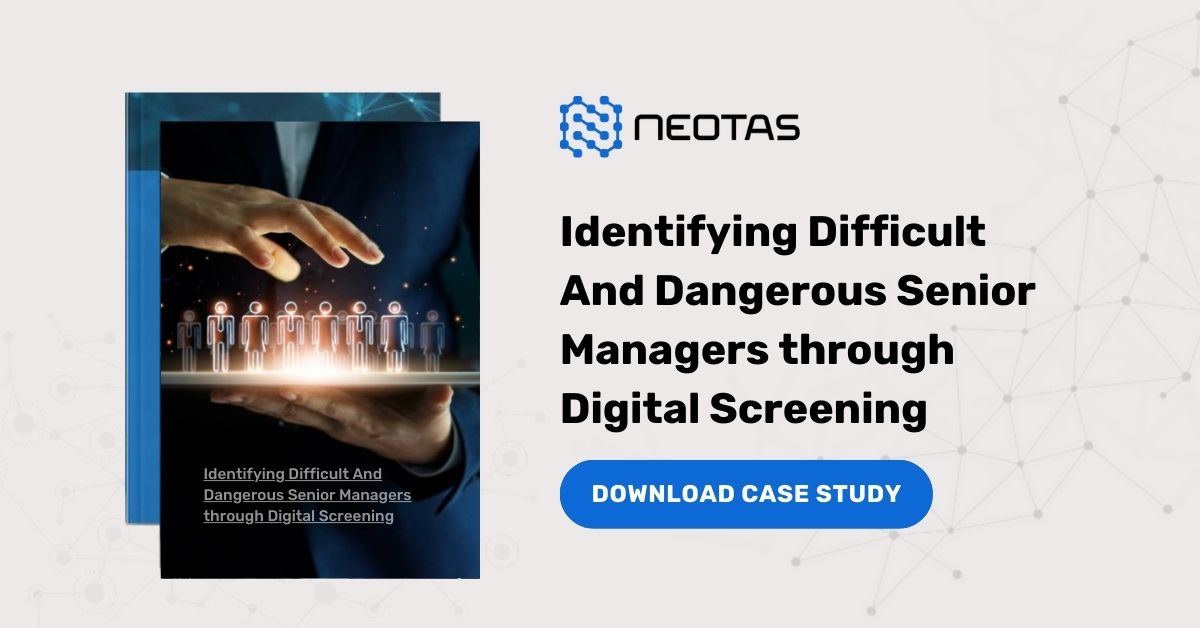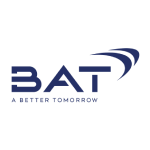Open-source Intelligence for Supply Chain
In this case study we will cover insights and knowhow on “How to Detect Modern Slavery In Supply Chain using Open-source Intelligence (OSINT)”
At Neotas, we understand the importance of eradicating modern slavery and ensuring ethical sourcing. Our expert team harnesses the power of OSINT to help businesses detect and combat this egregious violation of human rights. Through comprehensive analysis and advanced methodologies, we uncover hidden connections, identify red flags, and provide actionable recommendations to safeguard your supply chain.
Join us in the fight against modern slavery and protect your business from reputational damage and legal repercussions. Together, we can build a more equitable and just society.
Download your case study on
Open-source Intelligence for Supply Chain
Interested to know more about OSINT? Schedule a call with us and we would be happy to elaborate on how we can help you with our expertise in OSINT.
About Neotas Due Diligence
Neotas Platform covers 600Bn+ archived web pages, 1.8Bn+ court records, 198M+ corporate records, global social media platforms, and 40,000+ Media sources from over 100 countries to help you build a comprehensive picture of the team. It’s a world-first, searching beyond Google. Neotas’ diligence uncovers illicit activities, reducing financial and reputational risk.
Due Diligence Solutions:
- Enhanced Due Diligence
- Management Due Diligence
- Customer Due Diligence
- Simplified Due Diligence
- Third Party Risk Management
- Open Source Intelligence (OSINT)
- Introducing the Neotas Enhanced Due Diligence Platform
Due Diligence Case Studies:
- Case Study: OSINT for EDD & AML Compliance
- Overcoming EDD Challenges on High Risk Customers
- Neotas Open Source Intelligence (OSINT) based AML Solution sees beneath the surface
- ESG Risks Uncovered In Investigation For Global Private Equity Firm
- Management Due Diligence Reveals Abusive CEO
- Ongoing Monitoring Protects Credit Against Subsidiary Threat
- AML Compliance and Fraud Detection – How to Spot a Money Launderer and Prevent It
- OSINT Framework, OSINT Tools, OSINT Techniques, and how to use OSINT framework.
- Open Source Intelligence (OSINT) in the Fight Against Financial Crime
- Reduce & Manage Business Risk with Neotas Open Source Intelligence (OSINT) Solutions
- Using OSINT for Sources of Wealth Checks
- Open Source Intelligence (OSINT) based AML Solution sees beneath the surface
- Enhancing ESG Risk Management Framework with Neotas’ OSINT Integration
- How Open Source Intelligence (OSINT) is transforming enhanced due diligence and investigations in AML compliance
- Detecting Modern Slavery In Your Supply Chain using Open-source Intelligence
- Creating an effective framework for managing risk with suppliers and third parties using open-source intelligence (OSINT)
- Using Open Source Intelligence For Enhanced Due Diligence
Manage Supply Chain and Business Risk with OSINT.
Neotas is an Enhanced Due Diligence Platform that leverages AI to join the dots between Corporate Records, Adverse Media and Open Source Intelligence (OSINT).
Schedule a Call or Book a Demo of Neotas Enhanced Due Diligence Platform.
Here are some commonly asked questions we get on Open-source intelligence (OSINT):
Q1: What is open-source intelligence (OSINT)?
Open-source intelligence, commonly known as OSINT, is the process of collecting and analysing information from publicly available sources. These sources can include websites, social media platforms, news articles, government databases, and more. OSINT helps gather valuable insights and data that can be used for various purposes such as research, intelligence gathering, risk assessment, and decision-making.
Q2: What are the benefits of using OSINT?
There are several benefits of using OSINT. It allows businesses and organisations to gather information from diverse sources quickly and cost-effectively. OSINT helps in monitoring market trends, competitors, and customer sentiment. It also assists in conducting due diligence, identifying potential risks and threats, and enhancing security measures. Additionally, OSINT aids in brand protection, reputation management, and staying informed about emerging issues or opportunities.
Q3: What tools are commonly used for OSINT?
Various tools are available for conducting OSINT activities. Some popular tools include search engines like Google and Bing, social media monitoring platforms, data scraping and extraction tools, web analytics tools, specialised search engines for specific data types (such as Shodan for IoT devices), and advanced data analysis software. These tools help automate the collection, organisation, and analysis of data from multiple sources, enhancing the efficiency and effectiveness of OSINT operations.
Q4: How can OSINT be used for cybersecurity?
OSINT plays a vital role in cybersecurity. It helps identify potential vulnerabilities by monitoring online discussions, identifying leaked information or data breaches, and analysing publicly available threat intelligence. OSINT can also assist in understanding the tactics, techniques, and procedures (TTPs) of threat actors, thus enabling proactive threat mitigation. By leveraging OSINT, organisations can stay updated about emerging cyber threats and take necessary steps to enhance their security posture.
Q5: Are there any ethical considerations when using OSINT?
Yes, ethical considerations are crucial when using OSINT. It is essential to respect privacy laws and regulations while gathering information. OSINT practitioners should refrain from engaging in unauthorised access, hacking, or any illegal activities. It is important to use OSINT tools and techniques responsibly, ensuring that the information collected is used ethically and within the bounds of applicable laws and regulations.

